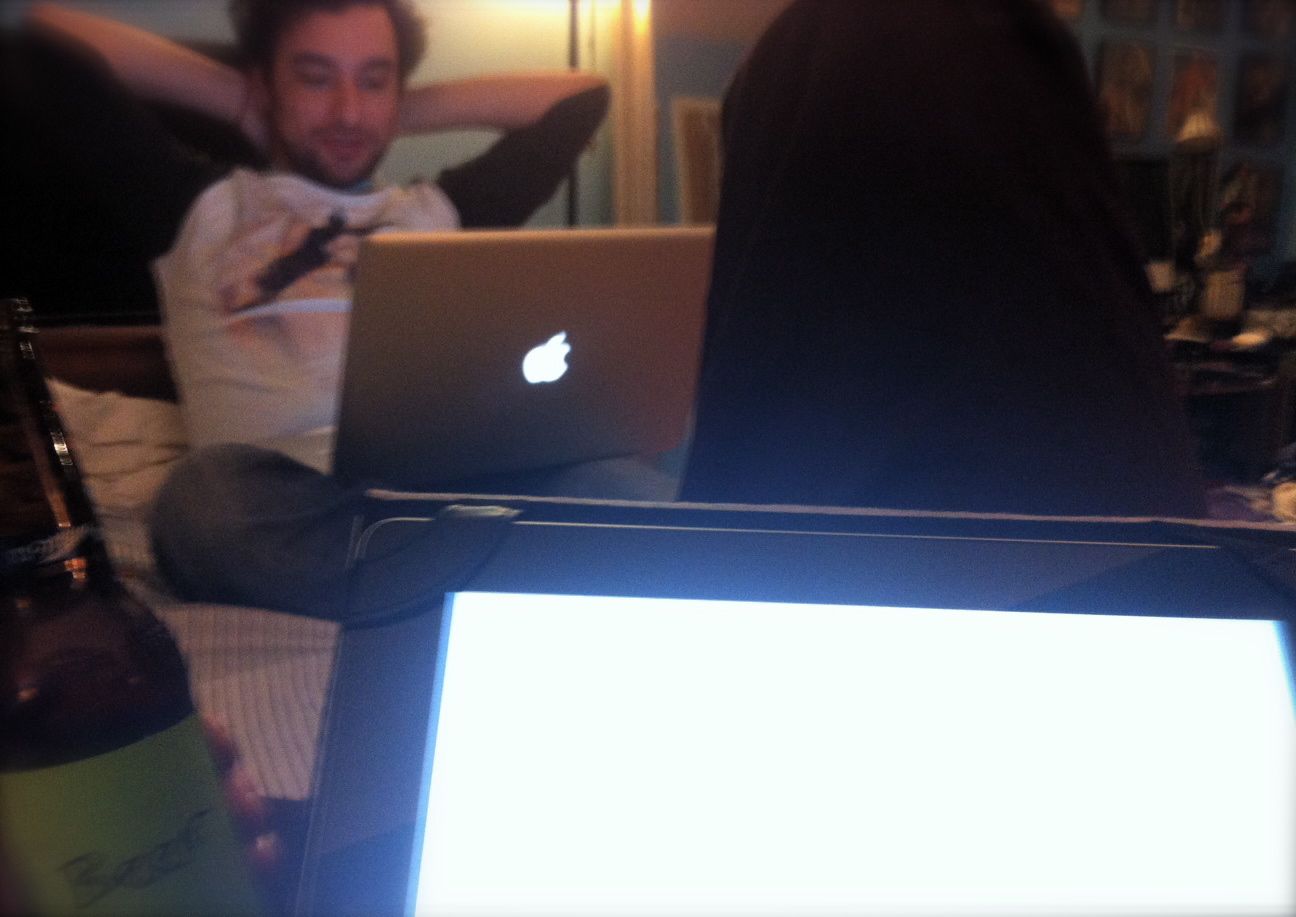
Season Two Episode Four
[flickr id=”8471919675″ thumbnail=”medium” overlay=”true” size=”original” group=”” align=”none”]
Four weeks in, already. It’s hard to believe on one hand, but on the other it strangely feels like we’ve already hit stress levels not unlike week-twelve of last semester. I’ve not had to resort to energy drinks this time around. Not yet. But, for those of you interested in how semester #2 is playing out, what follows is a rough breakdown of our week.
Monday is about story. In what pans out like some giant game of musical chairs, fourteen producers and seventeen directors make a dash for seats in our Story Development class. With professors Karen Loop and Joe Steiff, we will develop a series of screenplays throughout the semester. For Script #1, we each had to write a three-minute animation, and from those thirty-one scripts we whittled down to five, which will undergo further development in the next month or so before being submitted to the Animation Production Studio, where two will go into production later this year.
[flickr id=”8473010948″ thumbnail=”medium” overlay=”true” size=”original” group=”” align=”none”]
Thankfully, we do not have class, nor do I work on Tuesdays. It’s a day for sleep homework. So far, it has been spent watching movies and writing papers for the first of this semester’s analysis classes: Wednesday’s short & snappily titled Critical Analysis of Contemporary Film & Media, with Zoran Samardzija. Later in the semester, our second analysis class, Cinema Studies II, will be mostly concerned with the aesthetics of cinema throughout history. This first class, however, looks at the broader picture, and examines trends in the film industry. Last week we discussed the dawn of CinemaScope and it’s social, cultural, and technological influences and effects, using 2001: A Space Odyssey as a case study. Flicking through the syllabus, I noticed we’re going to be discussing franchises and reboots in the final few weeks of the semester, and am more than happy that our case studies include Star Trek II: The Wrath of Khan (1982), some episodes from The Next Generation (1987-94), and J.J. Abrams recent Star Trek (2009).
Thursdays are our most practical day, with back-to-back classes in Line Producing I and Post-Production. The former takes us through the nuts & bolts of physical production a film from initially breaking down a script to scheduling and budgeting with Movie Magic filmmaking software. Though we’re in this program to creative produce, it’s key to be aware of the physical demands of producing a film, and that’s what professor Julian Grant aims for us to understand. Thursday afternoons are spent with David Tarleton who is taking us through the post-production workflow. To some extent, this involves editing, but it’s more geared towards understanding the process in between principal photography and having a finished film.
[flickr id=”8471919687″ thumbnail=”medium” overlay=”true” size=”original” group=”” align=”none”]
Fridays are for hiding. But, in so far as the curriculum is concerned, that’s the bulk of what we’ll be doing this semester. Grad school, however, should not just be about schoolwork or grades. My main focus is the slate of material I’m developing under the guidance of these Hollywood and industry veterans, as is the case for many of the producers. Further, filmmaking is so much about networking and experience that we’re all trying to involve ourselves with as many Columbia productions as is possible. In the next few weeks, I’m going to be working with former producing ambassador Dan Mollison on his thesis film, and I’ve just signed on to produce a thesis film for one of Columbia’s graduating cinematographers.
Last semester, someone said, “The first semester is always the busiest; next semester won’t be so bad.” I don’t know why, but I believed them. Someone also once told me that the word gullible isn’t in the dictionary, and I believed that too.
